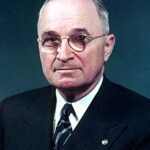The Historic NATO Alliance Decision
President Harry Truman signed the North Atlantic Treaty on April 4, 1949. This groundbreaking decision created the NATO Alliance between twelve Western nations. The treaty established collective defense under Article 5. An attack on one member would be considered an attack on all.
Strategic Context and Implementation
The Berlin Blockade of 1948 demonstrated Soviet aggressive intentions. ⚠️ Truman recognized the urgent need for coordinated Western defense. European nations lacked resources for individual military buildup. The NATO Alliance provided collective security through shared defense spending.
Building the Atlantic Partnership
Initial members included the United States, Canada, and ten European nations. 📊 The treaty committed $1.3 billion in initial military aid. Truman worked closely with Secretary of State Dean Acheson. Bipartisan congressional support secured treaty ratification by 82-13 votes.
Impact:
Immediate Security Transformation
The NATO Alliance fundamentally altered Cold War dynamics within months. Soviet expansion into Western Europe became militarily unfeasible. 🌍 European confidence in American commitment strengthened dramatically. The alliance structure facilitated coordinated intelligence sharing and joint military planning.
Long-term Strategic Success
NATO successfully deterred Soviet aggression for four decades. The alliance survived the Cold War and expanded eastward. 🔥 No NATO member has ever been successfully invaded. The organization adapted to address terrorism and cyber threats post-9/11.
Democratic Values Protection
The NATO Alliance preserved Western democratic institutions throughout the Cold War. Member nations maintained free elections and civil liberties. The alliance promoted democratic values in newly liberated Eastern European nations. Today, NATO encompasses thirty-one democratic nations committed to collective security and shared values.
